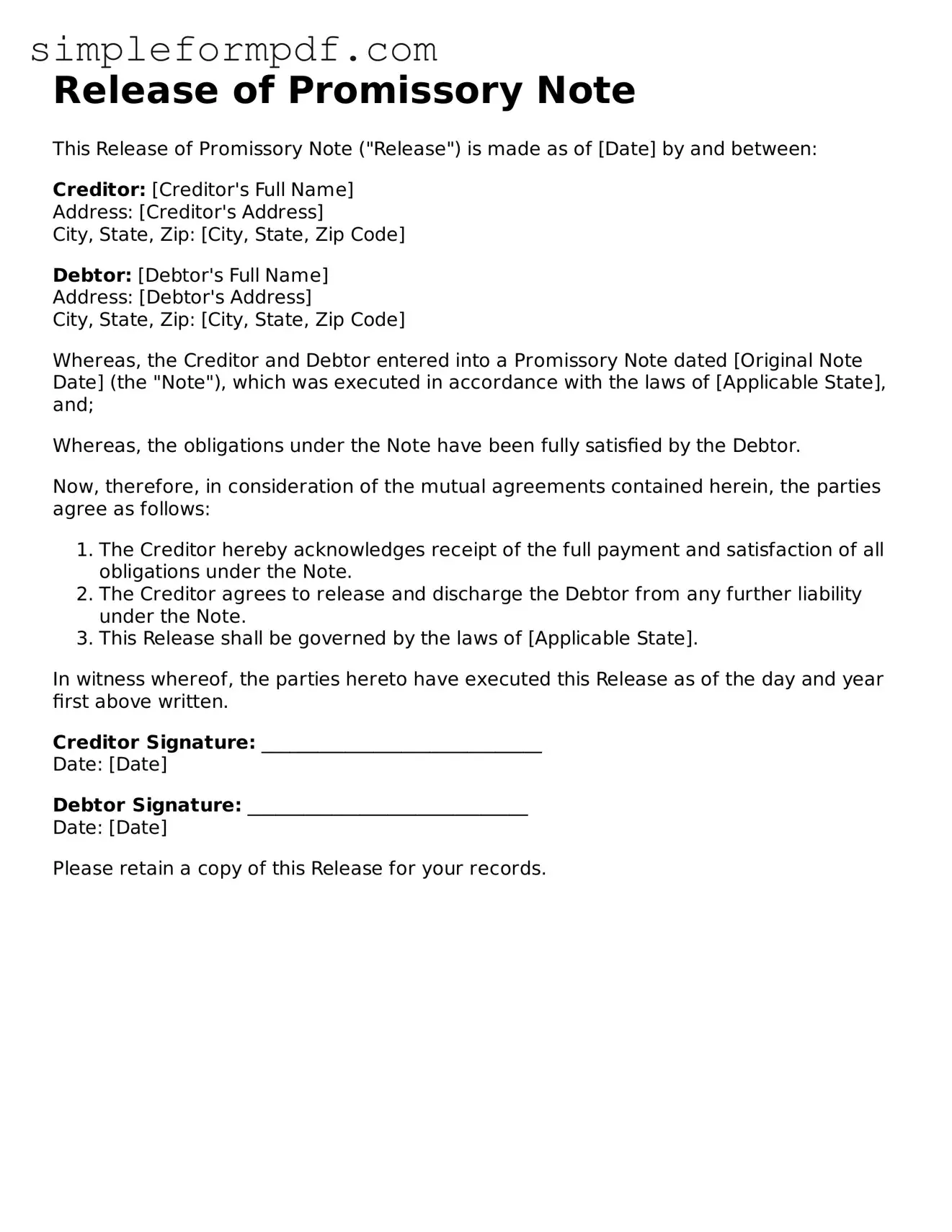Release of Promissory Note
This Release of Promissory Note ("Release") is made as of [Date] by and between:
Creditor: [Creditor's Full Name]
Address: [Creditor's Address]
City, State, Zip: [City, State, Zip Code]
Debtor: [Debtor's Full Name]
Address: [Debtor's Address]
City, State, Zip: [City, State, Zip Code]
Whereas, the Creditor and Debtor entered into a Promissory Note dated [Original Note Date] (the "Note"), which was executed in accordance with the laws of [Applicable State], and;
Whereas, the obligations under the Note have been fully satisfied by the Debtor.
Now, therefore, in consideration of the mutual agreements contained herein, the parties agree as follows:
- The Creditor hereby acknowledges receipt of the full payment and satisfaction of all obligations under the Note.
- The Creditor agrees to release and discharge the Debtor from any further liability under the Note.
- This Release shall be governed by the laws of [Applicable State].
In witness whereof, the parties hereto have executed this Release as of the day and year first above written.
Creditor Signature: ______________________________
Date: [Date]
Debtor Signature: ______________________________
Date: [Date]
Please retain a copy of this Release for your records.
